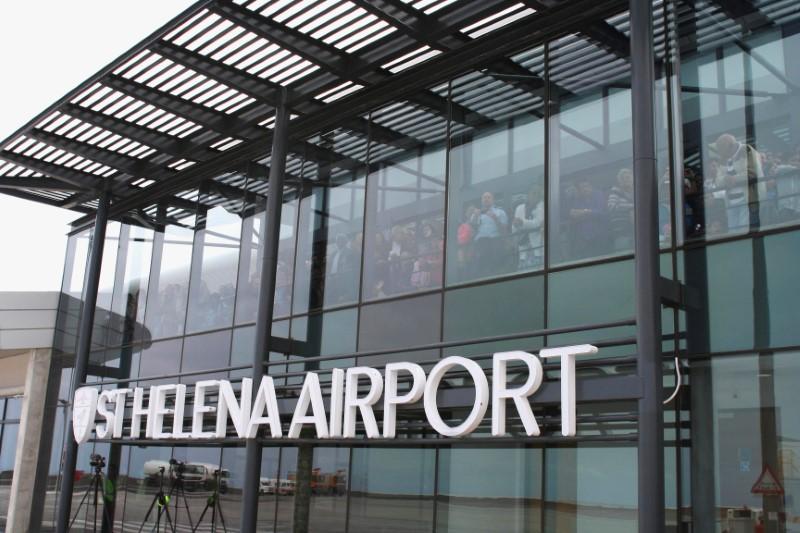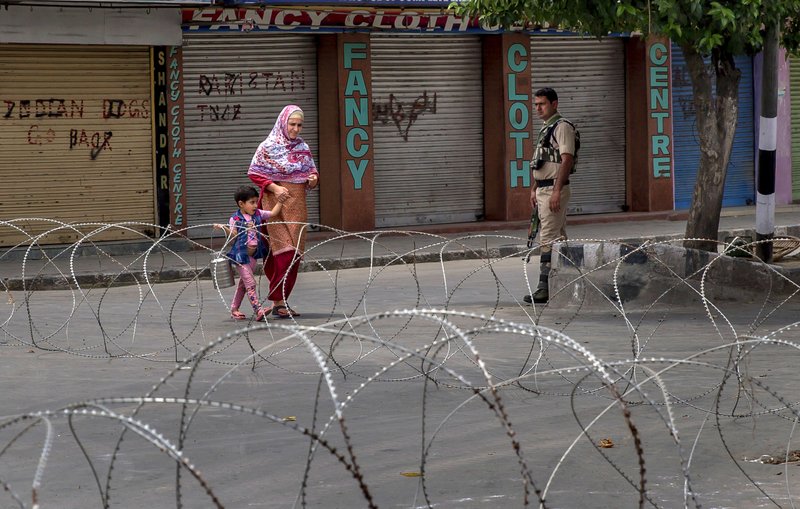
One of humanity’s most isolated outposts joined the 21st century on Saturday when the British island of St. Helena, home to “the world’s most useless airport”, welcomed its first commercial flight.
As the inaugural plane from Johannesburg touched down on the forbidding volcanic outcrop in the middle of the south Atlantic, the travel and history buffs on board clapped and cheered.
“I’ve never felt so emotional in all my life,” said Libby Weir-Breen, a British travel operator who has been bringing tourists to the island, 1,200 miles (1,900 km) west of the African nation of Angola, for the last 12 years.
She had flown in specially from Scotland to be on the plane, and dabbed away tears as it touched down on the spectacular cliff-side runway. “I never thought I’d see this day,” she said.
The 4,500 people living on St. Helena, a British colony since 1658 – most famous as the windswept outpost where French emperor Napoleon Bonaparte breathed his last – might also be forgiven for thinking the day would never come.
There has been talk of building an airport on St. Helena since the 1930s. The best site – one of the few flat spaces on the notoriously craggy island – was ruled out because of a nearby breeding ground for the wirebird, an endangered species of plover.
An airport at the new site, on top of a valley filled in with 8 million cubic meters of rock, suffered numerous setbacks and delays as costs ballooned to 285 million pounds, to the horror of the British government.
The runway and terminal were completed in 2016 but the official opening was pushed back another year after test flights were buffeted by wicked cross-winds, making it unsafe for large aircraft to use.
With Britain mired in financial austerity, the London media were quick to condemn it as a white elephant, or “the world’s most useless airport”, with a price tag of more than 60,000 pounds for every Saint, as the island’s residents are known.
Before the opening of the airport, which will receive weekly flights to and from the South African commercial capital, the only way to St. Helena was a five-night voyage from Cape Town aboard the RMS St. Helena, a British postal ship.
With the risk of wind-shear limiting the size of planes and numbers of passengers – Saturday’s flight had room for 100 but only 68 on board due to weight restrictions – the hoped-for tourist boom is unlikely to materialize.
Hotel capacity has jumped in the last few years from just a few dozen rooms to more than 100, but, with a maximum of 3,500 visitors a year, the island is unlikely to be weaned off the 53 million pounds it receives in aid every year from London.
Besides Napoleon’s old house, Longwood, and a cemetery holding some of the 6,000 Afrikaner prisoners sent there by the British during the Anglo-Boer wars in South Africa, St. Helena offers scuba diving and walking in pristine natural wildernesses.
Governor Lisa Phillips dismissed the critics and said that even before it accepted its first commercial flight, the airport had proved its worth in the last 18 months by enabling several life-saving emergency medical evacuations, including a newborn child.
“I’ve seen the headlines about the world’s most useless airport, but for St. Helenans this has already been the most useful airport,” she told reporters after greeting them on the tarmac. “It’s priceless.”

